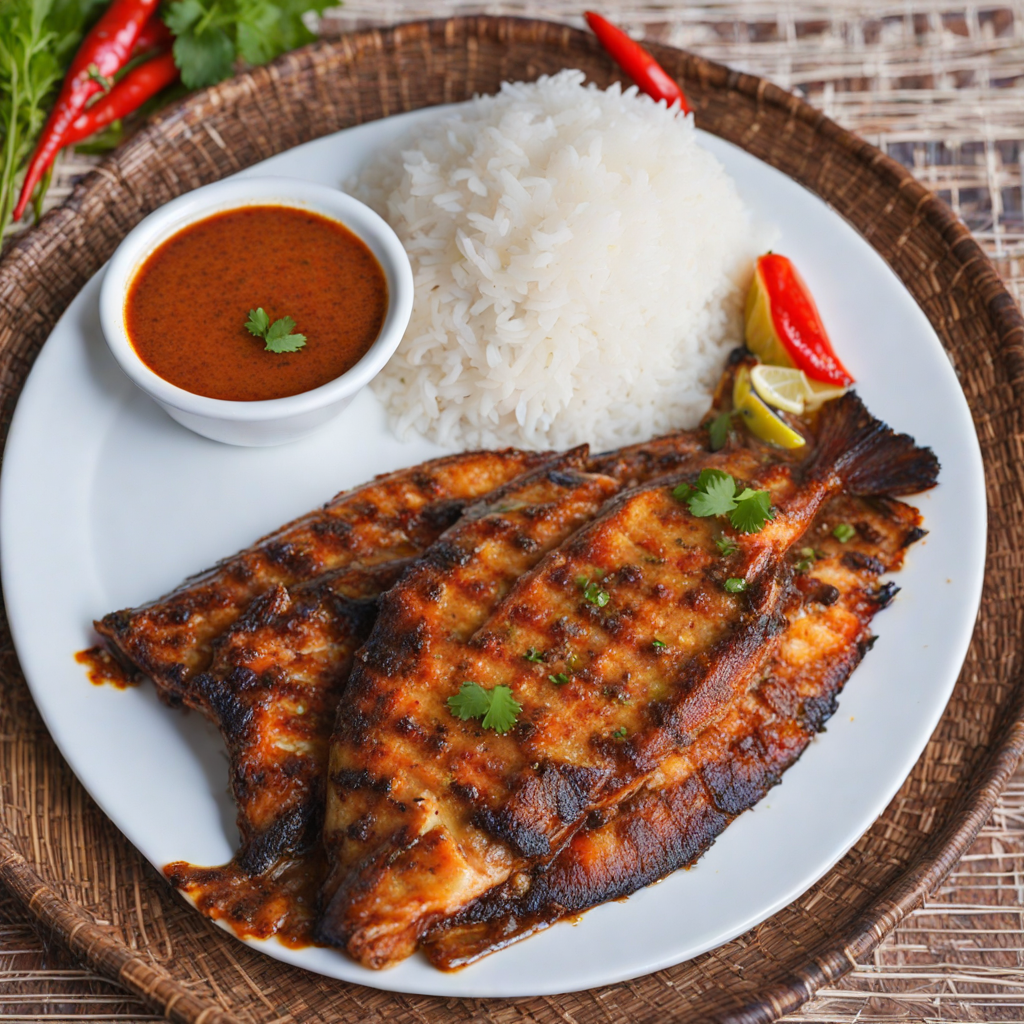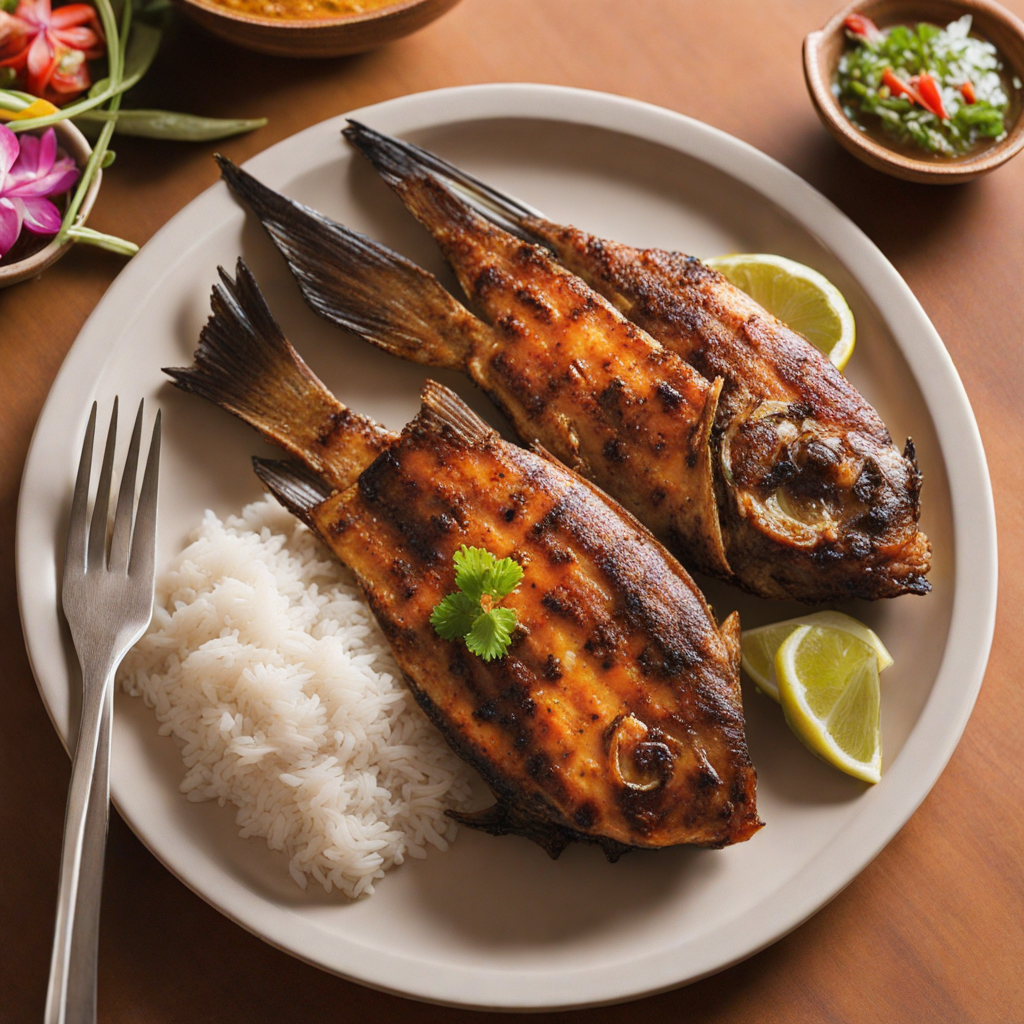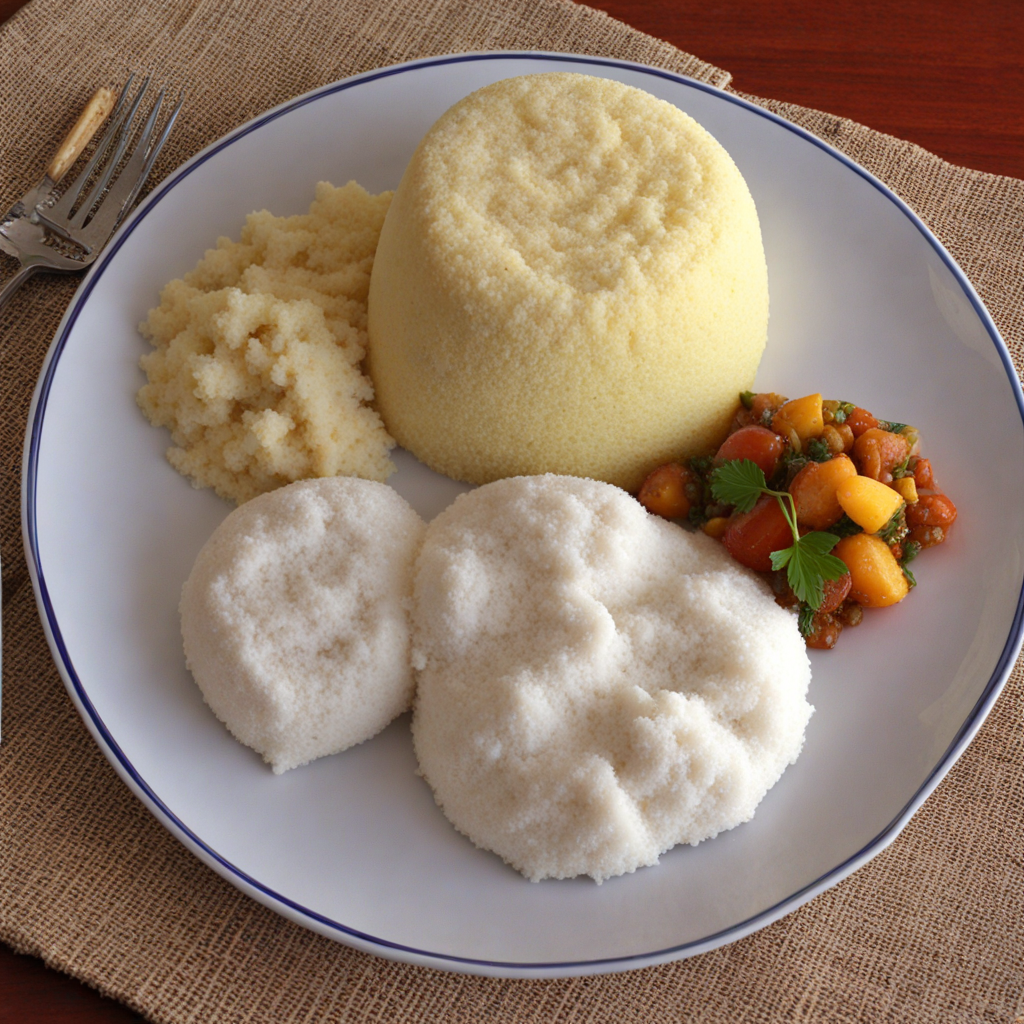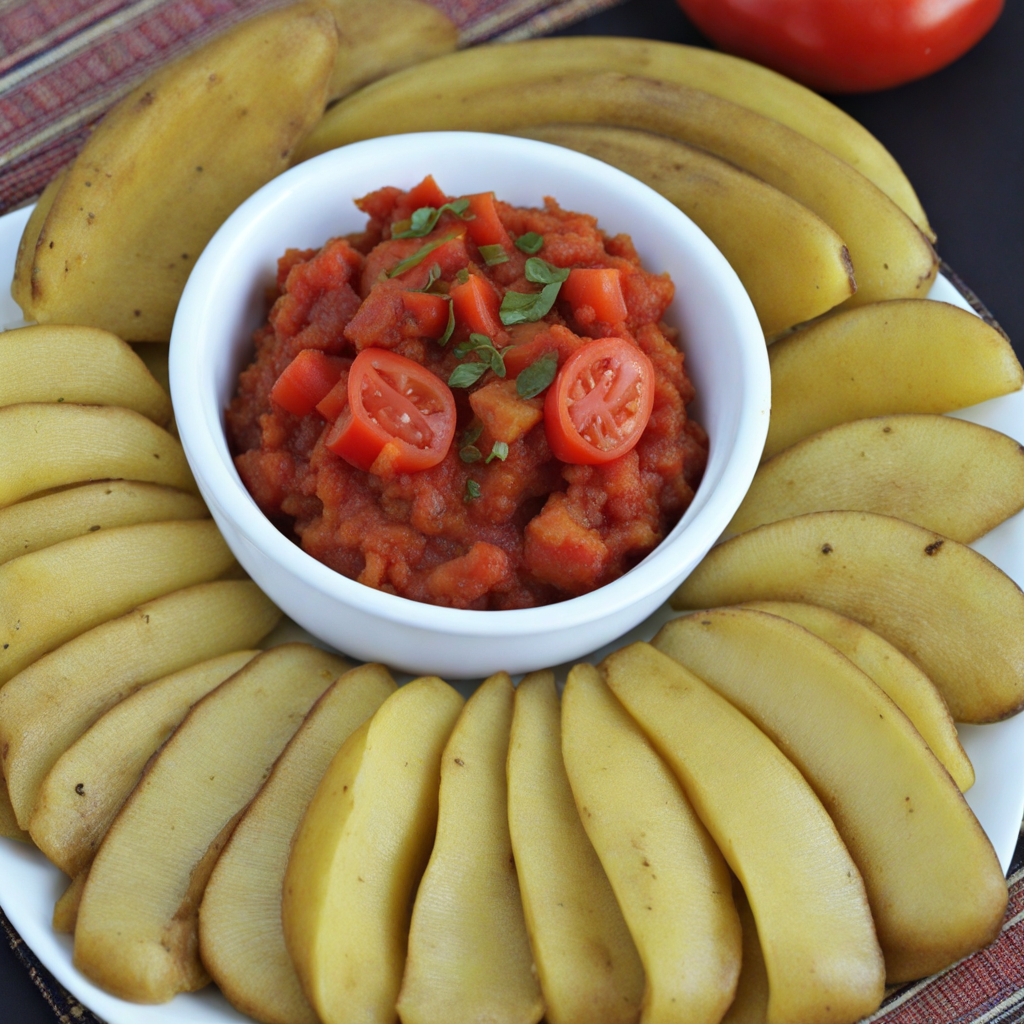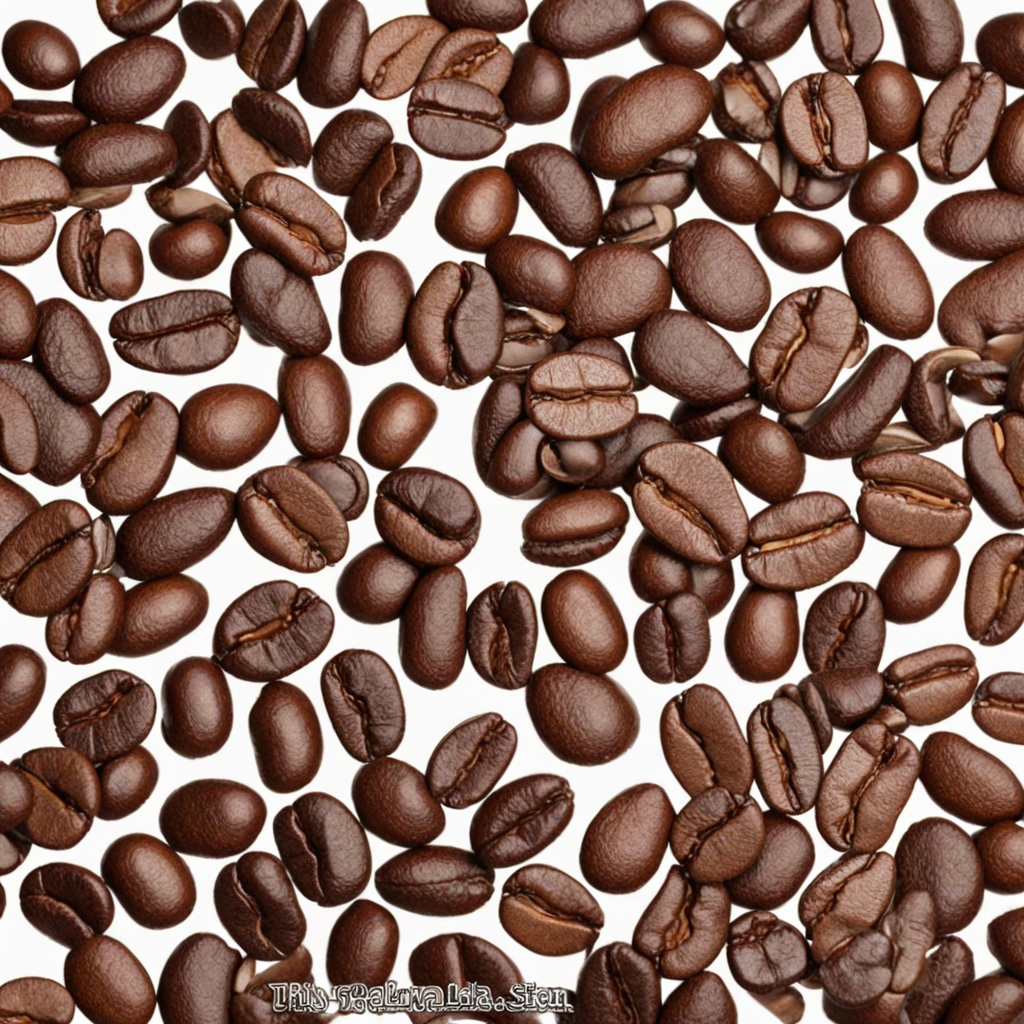Samaki wa Kupaka
Samaki wa Kupaka is a delightful Kenyan dish that showcases the rich flavors of coastal cuisine. This dish primarily features grilled fish, typically tilapia, marinated in a vibrant coconut sauce made from fresh ingredients. The marinade incorporates coconut milk, which adds a creamy texture, along with a medley of spices such as garlic, ginger, and chili. The combination of these elements creates a tantalizing balance of heat and sweetness, making each bite a burst of flavor that transports you straight to the shores of the Indian Ocean. When preparing Samaki wa Kupaka, the fish is first marinated to allow the spices to penetrate, enhancing its natural flavors. After marination, the fish is grilled to perfection, resulting in a smoky, charred exterior while remaining tender and flaky on the inside. The dish is often garnished with fresh herbs, such as coriander, which adds a refreshing touch that complements the richness of the coconut sauce. This attention to detail in both preparation and presentation makes it a feast for the eyes as well as the palate. Served alongside rice or ugali, Samaki wa Kupaka is not just a meal; it’s an experience. The creamy coconut sauce can be poured generously over the fish and the accompanying starch, allowing diners to enjoy the harmonious combination of flavors in every bite. Whether shared among family and friends or enjoyed as a personal treat, this dish invites food lovers to explore the unique culinary traditions of Kenya, making it an unforgettable addition to any dining experience.
How It Became This Dish
Origin of Samaki wa Kupaka Samaki wa Kupaka, a delicious fish dish from the coastal region of Kenya, is a vibrant representation of the culinary traditions of the Swahili people. The name itself derives from the Swahili language, where "samaki" means "fish" and "kupaka" translates to "to spread" or "to smear." This dish typically features fish, often barracuda or tilapia, marinated in a rich coconut sauce and grilled to perfection. The origins of Samaki wa Kupaka can be traced back to the historical interactions between African, Arab, Indian, and Portuguese cultures along the East African coast, particularly around the vibrant port city of Mombasa. The coastal region of Kenya has long been a melting pot of cultures, with traders and explorers arriving from various parts of the world. The influence of Arab traders, who brought spices and culinary techniques from the Arabian Peninsula, is particularly evident in Samaki wa Kupaka. The use of coconut milk, a staple in many East African dishes, reflects the region's tropical climate and the availability of coconut palms. Over time, this dish has evolved, absorbing influences from different communities while maintaining its distinct Swahili identity. \n\n Cultural Significance Samaki wa Kupaka is not just a dish; it is a cultural emblem for the Swahili people and the coastal communities of Kenya. It is often served during significant celebrations, such as weddings, festivals, and communal gatherings. The preparation and sharing of this dish symbolize hospitality and the importance of community in Swahili culture. The communal aspect of eating Samaki wa Kupaka, often enjoyed with family and friends, reinforces social bonds and reflects the values of togetherness and generosity that are central to Swahili life. Additionally, Samaki wa Kupaka has gained recognition beyond the confines of Kenya, becoming a popular dish among tourists who wish to experience authentic Swahili cuisine. Local restaurants and coastal resorts often feature this dish on their menus, showcasing the rich culinary heritage of the region. As such, it has become a culinary ambassador for Kenya, drawing interest from food enthusiasts eager to explore the flavors of East Africa. \n\n Development Over Time The evolution of Samaki wa Kupaka is a testament to the dynamic nature of culinary traditions. Initially, the dish was prepared using fish caught locally by fishermen, reflecting the sustenance practices of the coastal communities. Over time, as tourism and globalization increased, the ingredients and preparation methods have diversified. While the core elements of the dish remain the same, variations now exist that incorporate modern cooking techniques and flavors. One notable development is the infusion of spices that have become synonymous with Kenyan cuisine. The original recipe typically includes ingredients like garlic, ginger, and green chilies, but contemporary interpretations may introduce additional spices such as cumin, coriander, and turmeric. This blending of flavors not only enhances the taste but also reflects the broader culinary influences that have permeated Kenyan cuisine through trade and migration. Another significant change in the preparation of Samaki wa Kupaka has been the introduction of grilling techniques that highlight the dish's smoky flavor. Traditionally, the fish was often cooked over an open flame, but modern cooking appliances and methods have allowed for greater consistency and convenience in its preparation. This evolution has made Samaki wa Kupaka more accessible to home cooks, enabling them to recreate the dish even in urban settings far from the coast. \n\n Regional Variations While Samaki wa Kupaka is primarily associated with the coastal regions of Kenya, local variations exist that reflect the diverse culinary landscape of the country. In the northern coastal areas, for instance, chefs may incorporate different types of fish or add unique local spices to the coconut sauce. In contrast, southern coastal communities may emphasize the use of fresh herbs and citrus to brighten the flavors of the dish. Moreover, the adaptations of Samaki wa Kupaka can also be seen in how it is served. Traditionally, the dish is accompanied by rice or ugali, a starchy staple made from maize flour, which helps to balance the richness of the coconut sauce. In contemporary settings, chefs may experiment with side dishes, introducing salads or grilled vegetables to enhance the meal's nutritional value and appeal to modern palates. The ongoing evolution of Samaki wa Kupaka highlights the resilience and adaptability of Kenyan cuisine. As global culinary trends continue to influence local practices, the dish serves as a reminder of the importance of preserving traditional flavors while embracing innovation. This balance is crucial in ensuring that the cultural heritage embodied in Samaki wa Kupaka remains vibrant for future generations. \n\n Conclusion Samaki wa Kupaka stands as a culinary symbol of the rich and diverse heritage of the coastal regions of Kenya. Its origins are steeped in the historical intermingling of cultures, and its cultural significance extends far beyond mere sustenance. The dish encapsulates the essence of Swahili hospitality and communal living, making it a cherished part of local traditions. As it continues to develop and adapt, Samaki wa Kupaka will undoubtedly remain a beloved dish for both locals and visitors alike. Its ability to bridge cultural gaps and introduce people to the flavors of the Kenyan coast ensures that this delectable fish dish will be enjoyed for many years to come, serving as a delicious testament to the culinary history of Kenya.
You may like
Discover local flavors from Kenya


